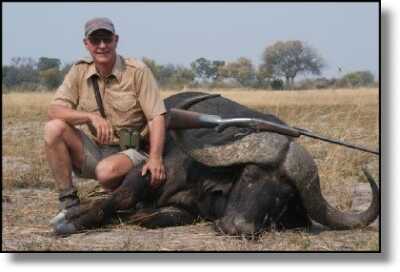 |
| This .461 Gibbs is identical to the rifle Selous carried. That it return to his Bechuanaland (now Botswana) and killed a cape buffalo makes it far more important in my eyes. |
Gun Collecting Basics
A wise and fun way into the exciting world of gun collecting.
by Ross Seyfried
The line between having a gun or two and becoming a collector is a fine and blurry one . . . and that is the magic of it all. You do not need a large bank account or carved-in-stone criteria to be a collector. We could use Webster to find a definition of a “collection”, but because I am writing this, I will make one up to suit. To me, a “collection” of guns and/or related items is simply when the whole is greater than the sum of its parts. There is more good news, that “greater” need not be in my eyes or in the eyes of formal collectors or organizations; but in your eyes only. If, over time, you choose wisely there is a very high probability that your collection will please someone else also; and it may be a very good financial investment. With that in mind let’s look at the mental process that can lead you down the road to safe and happy collecting.
There should be two overriding criteria when you begin to invest. First, buy what you like. That is, do not try to keep up with the “Joneses.” Just because someone has a fine collection of all Damascus Nambus, or gold inlaid Iver Johnsons it does not mean that these would be right for you.
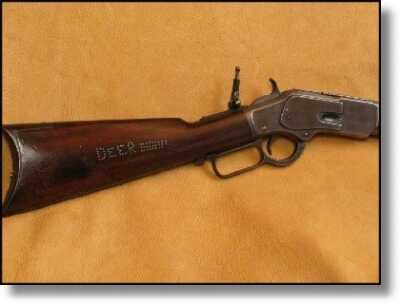 |
| I only own one Winchester lever action. Why I chose this otherwise non-descript Model ’73 is easy for some of us to understand. |
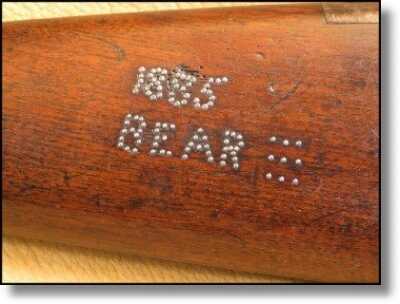 |
If you like American handguns, German shotguns, Swedish rifles, or some of each, by all means go for it. To me, guns are a passion, a pure love affair and that is their greatest value. For you to have that same reward, you have to make up the rules. The second and very, very important thing that I try to instill in every one I coach in the world of arms collection is be patient! Desire becomes a great thing when combined with passion. It is incredibly easy to buy a gun just to satisfy that desire, to overlook many of the common sense cautions you know to be true. Some pieces you want will come easily and quickly, some may take years or decades to find. And that in itself is part of the wonder of collecting.
I think most of we humans are hunters at heart and at times the pursuit, the chase, the hunt, may be as valuable as the “catch”. Just when you are sure that you will never find that one special piece, it will turn up and that in itself will make it more wonderful in your eyes. The syndrome called buyer’s remorse is a very real and bad thing. It is not easy to avoid, but patience will make you almost immune. If you have to talk yourself into a purchase, then it is probably better to wait. “No” can be a very good and active word. Having the money in hand when something that you really want becomes available is a very good feeling; instead of having a gun you really do not like and wishing you had the money. The flip side to patience is being ready to pounce decisively when real treasure, at good value appears. I remember well the day at a big show when several potential buyers were circling and handling a very, very special gun. I looked at it, quietly took out my check book and handed the seller his asking price. The others blinked and said, “We were going to buy that.” I replied, “When you see something like this, do not procrastinate, write the check.”
To help your thought processes as you begin to look for a direction to take, it is a good idea to ponder what you want the pieces in your collection to do. First, do you want to be able to shoot them? To me that is a must. Virtually every piece I have ever bought has been selected with the thought of, “what was it designed to do . . . how can I make it go bang?” To that end with few exceptions I have fired every one I have owned and the majority, by far, have hunted and taken birds or game animals.
I have always been fascinated by ballistic systems and what the old guns did in the past. My .577 has been in an argument with a cape buffalo, my flint gun brought a goose out of the sky. The Holland & Holland Paradox caught a pig and a quail and my Smith & Wesson single shot .22 stopped a gold-fish raiding snake. In fact, I have evolved as a hunter to a level where I have only a limited desire to kill things. It is most often the guns themselves (and the need to please a very eager Labrador) that gives me the excuse to hunt. Bringing the old arms back to life serves a very important purpose
While I have always been shooting and hunting oriented, others may want to preserve history, for the sake of history itself. We see many fine collections, great and small in this category. Within this range we often see military collections or collections from specific periods in history. They may be related to specific people as in those who have preserved many of Jack O’Connor’s arms, those of military officers or perhaps the highest evolution, the collecting of guns owned by our greatest hero, Theodore Roosevelt. Many fine collections are comprised of one maker: Colts, Smith & Wessons, Winchesters, Merwin Hulbert or even more refined in scope to Model 12s or Smith & Wesson Registered Magnums. The most important point in all of this is there are no rules. I can tell you that the finest collection I know in the world can be described as absolutely eclectic. That is, there is no central theme except excellence. Each and every piece is new or nearly new, including the 200-year old Joseph Manton flintlock with every refinement. Within there are grand collections of Model 12 Winchesters, Smith & Wessons, English Doubles and Italy’s finest. There are .410s and 4-bores, .22s and 600s.
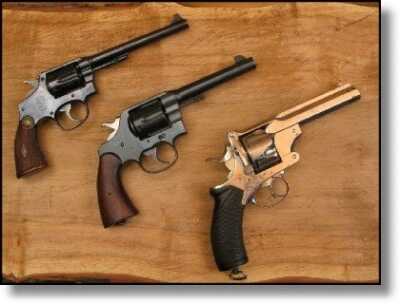 |
| Eclectic! My revolver collection has no direction except what pleases me. Top to bottom: A pre-war S&W .32-20 Target, my grandfather’s 1917 Army Colt and the grand prize a Webley-Pryse .577. |
As we circle back to the beginning and the question of what do you want them to do we see, in my opinion two sub-categories. Those you can shoot and those you cannot. To me, and this is purely personal, the least interesting guns of all are “new in the box.” I have owned a couple and sold them, because to me a Colt I cannot cock, or a Winchester model 70 that I can never point at an elk is about as interesting as a rare stamp. There is nothing wrong with new-in-the-box guns; they are just not for shooters. Of course there is the value consideration; you are likely to pay as much for the box as the gun it protects. Just below the new guns are those in very high original condition. I have them, shoot them and even hunt with them, but in places and ways that do no harm. While on that subject we should touch the notion that firing any gun will damage it. A few months ago I tried to buy an English muzzle loading shotgun on behalf of a friend. It was a nice gun, with moderate mileage and about 20 percent of its original finish. Said another way it probably had been fired thousands of times. The owner refused to sell it to us because it was destined to hunt Chuckar partridges . . . on the grounds that firing it would ruin it. Good grief man, they were made to shoot! Care and consideration are certainly necessary when you actually fire fine guns, but that does not mean they cannot be enjoyed and employed to the fullest. Beyond the high-condition pieces are those with some good honest miles . . . and these are often among my favorites. First I wish they could talk, wish they could tell me where they have been. Second, they fear not the mountain or a rain storm; they have seen it all before. In careful hands they will take far less damage on a hunt that being banged about at a gun show!
A final consideration, when you collect, is financial investment. A good gun, purchased wisely at good value is very, very apt to make you money over time. Investing well takes knowledge and caution. You can create the caution, but knowledge takes time and experience and it is a “buyer beware” world out there. While I certainly do not want to cast a bad light on gun sellers, it is very, very easy to buy bad things, or pay way too much. The good news is that the world of gun collecting is full of wonderful people, many, even most of which are glad to share the knowledge and to protect a neophyte. There are a few things that will bite the unwary: over-priced, fakes, refinished guns being sold as original condition and just plain junk A fine gun that has been molested by someone posing as a gunsmith is a real tragedy and something to normally be avoided at all cost. In every category you are likely to pay more than the gun is worth, and almost always when you want to sell your mistakes it will prove extremely difficult to get rid of them.
As you begin to buy for either pleasure or investment (and in my opinion they should go together) my best advice is to always buy the best of whatever kind you want, that you can afford. This needs to be tempered on the top end, again the new in the box concept. If that is what you want, then by all means pursue them. If on the other hand you want to have fun, you can buy two nice, 90-percent plus Model 70s for the same or less money than the boxed one. On the opposite end of the spectrum, there are the badly refinished or beat up ones. If you want a user-beater, then assuming the bores are okay, these are fine. But they are not apt to appreciate and may not make you smile a year later.
It may also be worth thinking about what I call the “rarity” trap. That is relatively poor condition and even poor quality guns that cost a lot because they are “rare.” American collectibles are certainly driven by the rarity concept. If you find a gun with production numbers less than 10,000 it probably is going to be expensive; find one with less than 1000 ever made and it is likely to be frightening. That again is okay, if that is what you want. Personally I do not attach a lot of value to “rarity.” I often see relatively rusty, quite uninteresting pieces commanding huge sums, just because they were rare. I think and buy with another kind of criteria, based on two questions. First, how much did the gun cost the day the made it? Many of the British or Continental arms I collect cost several hundred dollars in the 1800s. In general high original cost equates to high quality and tremendous workmanship. The second question is, “how much of that is left?” That is, what is its condition today? It is not unreasonable to purchase an arm that cost several hundred dollars then for only several thousand now. This thinking is in contrast to the Colt or Winchester that cost $25 a century ago and that often commands tens or even hundreds of thousands of dollars today . . . just because it is rare. Please do not misunderstand, I do not decry the great Colt or Winchesters, I just do not want to play on their field and want you to know there are values beyond “rarity” to a collector.
If there is a deep dark secret to buying arms in a way that will allow they to appreciate quickly; it is to get ahead of a trend. I did this, unwittingly, long ago. I had very little money, but liked fine guns; so I bought what I liked and what I could afford. These were Damascus barreled English double shotguns. Most of them were 10 gauges. At the time no one wanted a gun with Damascus barrels and even less coveted a 10 bore. I was a duck, goose and pheasant hunter, so they suited me. My first big purchase was actually a trade; a Smith & Wesson .22 Jet “bought” two extremely fine 10 gauge doubles. One, as I would learn later, a Scott Premier Gun cost more in 1881 than the Jet did in 1979!!! Others of best English make actually cost me about the same as Remington pumps and autos. That “opportunity” is well past now and if I could predict the next trend, rest assured I would keep it to myself. However, there are lots of niches out there and you may be able to find them, because you are frugal or wise, or both. Or like me, you may just be the blind squirrel that finds the acorn. It is all part of the fun and intrigue of becoming a collector.
A final kind of value is what I call “people” value. I have a few pieces that are “attached” to friends and have wonderful stories to go with them. It took almost a decade to secure the Purdey pinfire shotgun after it became “mine.” There was a tremendous and exquisitely fun tug of war between the owner and buyer. It will remain always a grand prize in my eyes. Another was the last gun sold by one of our famous and wonderful dealers. It was seriously overpriced and as a joke between us he sold it to me at full price . . . “with 25 years to pay and no interest”. He passed away that night and I treasure the wonderful Westley Richards rifle beyond any price.
Beyond the guns themselves, some of the related items can be a lot of fun. Old loading tools fascinate me. There was a time when a gun or rifle came with a complete loading outfit, designed to be used out in the field, be it the wilds of America, or the dark and distant lands of Africa and India. These tools often resemble jewelry in their quality and workmanship . . .. and they can still make cartridges for your gun. Sights are also wonderful and have become more and more collectible. A humble Lyman or Marbles vintage sight usually commands more money today than the entire rifle cost new! They too are beautiful and wonderfully made. Original ammunition and boxes are a lot of fun as are cartridge boards. Holsters and gun cases form an entirely different and related field. If you want to know what a great working-holster might be, just look at one from the 1800s. No, not the look adopted by Hollywood “gunslinger”, but the real ones. There was a time when many men and women wore a gun all day, every day. Just like their saddles, these folks new a thing or two about function and practicality! Books and old catalogs are great fun to own and read. The books, tools and other accessories are priceless tools in the learning process that will allow you to evolve from a babe in the woods to a knowing and wise collector . . . who, by the way, will then be equipped to help others.
As we wind down for the moment I realize this may have created more questions than answers. The devil is in the details so they say, and this is very true in the realm of gun collecting. In the future we can get out our magnifying glass and look at some of the details surrounding condition, or even specific categories of arms that may interest you. For the moment enjoy and remember above all else, this is supposed to be fun!
Ross Seyfried is a lifetime collector and shooter of vintage British and Continental arms from .22 all the way up to 4 gauge smoothbore. He has been hunting, shooting and reloading for 50 years, has been a licensed Professional Hunter in Zambia and Tanzania and is currently a licensed guide and outfitter in Oregon. He is currently a consultant to and field correspondent for the NRA, and was World IPSC Champion in 1981.

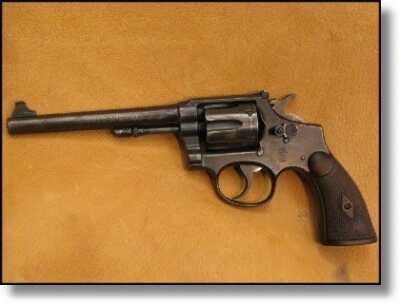
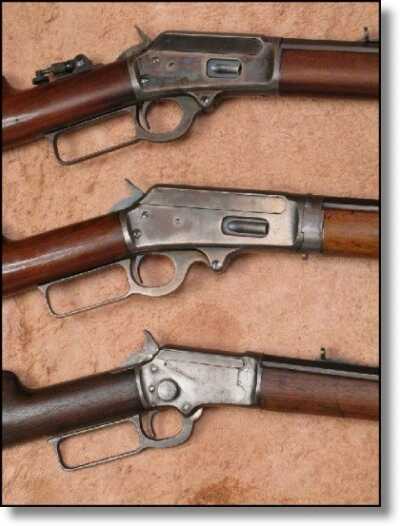
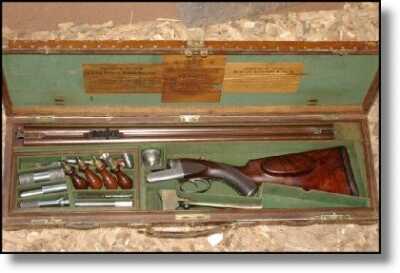
For many many years i have been collecting old Colts,Winchesters and Marlins,I have some that are 98+% condition and they are a joy to look at but that’s about all.The ones i really enjoy collecting are the old cowboy era guns that have some war marks and character to them,not old rusty dug ups but real genuine lever guns that have been there and done that and have still somehow survived in relatively good functional shape and you can still take them hunting and not worry about the gun not being able to do its part.I have an old 1894 Win SRC in 38-55WCF with a silver dollar cut into a star embedded in the butt stock along with a horse’s head carved out of a silver half dollar embedded in it also,a real cowboy gun,shoots as good as the day it was made.Another favorite is a 1894 SRC 30WCF I got off the Nez Perez Indian res.in Lapwai Id.The brass tacks and design work makes me get goose bumps every time i pick it up and its an excellent shooter.I agree with the author 100% about a gun in your collection has to be a shooter and all of mine are or i have them fixed to where they are shooters without damaging their original hard earned finish.
What a great article. Collecting is a passion and the finds we collect fuel our fires. One of my dearest pieces was a butchered up old Hopkins and Allen falling block .22 that someone had replaced the barrel on. I won it on an online auction for next to nothing. But the shoulder stock and receiver were in good shape with good color on the case hardening. My uncle and I dissected it and plotted our game-plan for it’s rejuvenation. The barrel was designed to be removable so we removed the Marlin Model 60 barrel someone had cobbled onto it and pitched it. The plan was for 2 barrels to be hand made for it; one in .22LR and the other in .17HMR. The .22 would be half round/octagon in blue and the .17 would be stainless bull with an antique 4x scope. New fore-stocks would need to be fashioned. A mid-range Soule Sight was mounted on the tang and hooded front sight on the .22 barrel. New life was breathed into this old shooter and it may be unoriginal for other collectors but I cannot place any value on it.
Ross Seyfried is an outstanding writer and I look forward to reading all of his articles, wherever they appear. Especially in DGJ, where he brings back old guns to life. Sherman Bell is another phenomenal writer about collecting and hunting with antique guns. These guns have a lot more character and life to them than today’s plastic and stainless steel firearms. Open sights require wood craft, which really makes hunting hunting.
I have 4 old guns that I would like to no if they are of any value. I am not a collector. I took them in trade and they have been in my gun case for about 15 years. So i would like to find someone to talk to about them. Thank You
.
what is the best way to find the value of an older gun ?
I have a Smith & Wesson 32 and am not sure of its age
Great article. My first collectors piece is a Remington Mod 241 .22lr but I need to get a tubelar magazine to complete the rifle – any idea where this is available?
Thank you for a great article… it pretty much mirrors a lot of my thoughts. As you say, the goal of collecting really should be whatever makes the collector happy as opposed to living up to any kind of standard. Something to keep in mind too that every weapon that ultimately becomes a collectable started life as a “common” factory production piece. A few that I bought for fun over the years have really surprised me for how much they have appreciated in value, even though that was never the intent at the time I purchased them! Even that garden variety Mossberg 500A that I bought a few years ago for $100 is now worth about $300. Do I consider it a collectable? Obviously not… but the point is that pretty much any gun kept in good shape and taken care of is going to appreciate in value with time.
Terrific article! It’s given me a-lot to think about. I’ve got a “collection” of sorts; it is
centered around the WW1 era along with bayonets. Mauser’s are a favorite–with 1871
thru the K98. Sandbox League compared to many but enjoyable for me. Please keep up the
outstanding work!
Charles S. Brown
Oregon
Very good articale and advise. I have been collecting and displaying over 40 years and have bought what I want. I have made my own private museum. Here, got pictures on this site:
http://www.warrelics.eu/forum/collections-display/a-glimps-of-my-little-collection-12763-3/
Does any one know of a display stand to show off my rifles and/or shotguns? I would like to store them (unloaded of course) upright.
Mr. Seyfried,
I really enjoyed this article and have the same attitude as you about using the firearms I collect. They were meant for shooting and even antiques may be safely used if you treat them as they were intended. I truly miss your great articles that used to appear in Guns & Ammo I believe. One in particular I recall was about paper patched bullets which really intrigued me and I used your technique in my 45-70 Springfield model 1873. What a blast!
Here’s to you and to your continued success in life,
Del
To Whom:
I am / have been an NSSA member going back to early 70’s. Also AAA competitor. Competited in 3 countries, dozens of
states. I know the Skeet world . I would like information regarding Hand gun and long barrel (rifle) competitions.
From / for beginning etc. Can you steer me to competritive shooting venues.
Respectfully
Greg Frisilone
Is there one gun book that gives values I can rely upon when looking for old/used guns for investment.The Bible of gun prices.Thanks,greg
Mr. Seyfried,
It is a pleasure to read your articles-I really miss your writings in the magazines. You seem to have the ability to put into words my thoughts and feelings. I started collecting at age 18. Now at 46, it still brings great joy. I remember my first guy show. I had 150 dollars in my pocket and visions of a replica Colt Walker in my mind. Towards the end of the show,there it was-120 dollars later it had a new owner,stll have it today. I also hunt with the oldies. To me it has always been as much about what I was hunting with as the hunt itself. Thanks so much for your refreshing writing, Darin.
Fine article. Wish you were still writing for Rifle/Handloader. Thank you for the bow to one of our greatest presidents, Theodore Roosevelt, my hero also. And for showing respect by not calling him “Teddy.”
Loved the piece on collecting. It was as though you have read my thoughts relative to true gun values. Thirty or forty years of gun collecting and upgrading have taught me a few undeniable truths as well. As a career military man, finances have always been of paramount importance to me. Trying to exist on an income of a few piddling thousand a year slowly brought me to the realization that there was money to be made out there. Your exhortation about buying what you like was one of my first truths to be learned the hard way. Buying what was currently a fad or what other people seemed to like almost cleaned me out at an early age. German Lugers, 5 screw Smiths, Dirty Harry 8 3/8″ model 29’s… So, I decided to buy anything and everything that blew my skirt up, assuming I had the money. If I didn’t, trading was always an option that I loved. I loved it because it brought me the most reward with the least investment. For example, an old pre-64 Win 32 Spl traded for six old clunkers, 3 cherry 1917 Enfield’s and 3 as issued 1903 Springfield’s. Of course, back then the clunkers were all but valueless and the pre 64 Win had some small value, although it was hardly in pristine shape. By the time all the clunkers were cleaned up and sold, I’d made many many hundreds of dollars profit on that one deal.
I found out that a lot of other people liked what I liked. Keeping my ear to the ground I learned of a firearms sale at a prison in Arizona many years ago. I remembered that AZ prisons bought and used 1897 Winchester trench guns, which even back then had a small but solid collector value. I bought 60 at $60 each and it took every dime I had. I took a substantial loss selling my first twenty guns paying off my benefactor that had loaned me the money, leaving me 40 guns free and clear. I didn’t even bother trying to sell the 40 but put them away to speculate with when the market got better. It did, eventually, and I turned the 40 guns into a rather tidy profit. The point here is that the money was secondary to me at the time. I loved Model 97 Winchesters and the pick of the litter still adorns my personal collection today. The profit was merely a way of keeping score. I loved the hunt. Still do for that matter. These days everything I do goes through a dealer friend of mine. My deals have to be profitable to give the hungry dealer his pound of flesh and still make a bit for me.
These days being a gun enthusiast makes me about as popular as a sexual predator in the minds of many citizens and in the collective hearts of almost all law enforcement. My dealer friend tells me to become a dealer, which lends a small amount of legitimacy to the hobby. I can only smile at him as he dog paddles in a sea of red tape and idiotic brainfarts imposed by such notable firearms experts as Governor Moonbeam out here in California and his predecessor, old Arnold “Hammer the maid” Swartzenagger. I will say that one of the hardest things I have ever done in my life was to endeavor following ALL the moronic rules and regulations in California relating to firearms ownership which makes gun collecting a real sometimes thing out here.
I agree,the money is secondary and the honor of being able to hold and care for an important part of our history and share it with the younger generation is primary.I share my knowledge about these old guns with anyone who wants to listen and a lot of people come back again just because they have more questions to ask.I have had people come to me with and old Colt or Winchester wanting to sell and they give me first option because they know i appreciate them and their gun will be going to a good home,they usually give me a good break on the price because i am passionate about them and they know that their gun will be viewed and enjoyed by others.A guy just sold me a BP frame Colt peacemaker in 32WCF for a thousand dollars because he knows i wont sell it to make a profit and it will go on display and he can come and look at it anytime he wants.This sort of thing is important to people.
I really enjoyed reading your article about gun collecting. I am somewhat of a collector with a variety of firearms across the board. Long before I was old enough for the real thing, I collected minature cap guns which I would take to my grandfathers when we went for Sunday dinner after church. He would wire mount them to a Winchester advertising board. I still have them to this day 50 plus years later, only now I have that ecletic collection of the real thing to go with them. I really enjoy collecting odd hand guns, but enjoy my Winchesters and a Remington double damascus also. Again, Thankyou for the article.
“I wish they could talk, wish they could tell me where they have been”……WOW do I relate!
I Recently obtained a semi automatic 7.65 (.32 cal) Unique, a French weapon that I had never heard of from a “friend in need” who had owned it for nearly 40 years. This particular weapon was manufactured during the German occupation during WWII and “spookily” sports wings on the frame and a swastika on the barrel. It must have been brought back by a GI who had it “nickel plated” at some point.
I cant help but wonder about it’s history and since I have not fired it, I hope you (or someone on the blog) might be able to advise me in on the 1. quality 2. What I might expect when cleaned & fired and 3. Potential value?
An excellent article Mr. Seyfried. I agree completely that the firearm is often the most enjoyable part of the hunt, and frankly, it’s just too fun to bring some of these old guns back to life. Point of fact, I just introduced a pair of wild bush pigs to my Bren Mk.1 yesterday when they were attempting a raid on the chicken coop… needless to say, they really felt it when that .303 cartridge plowed into them.
There really is something magical about the connection to history that you get when you hunt with military surplus weaponry. Plus, how often do you get to say that your hunting rifle survived a world war and several smaller conflicts?
Great article! I would love to hear the story behind the gun that you whipped out your check book for! I know just what you mean when you say buy what you like. My collection is very eclectic, and you can see my tastes as you go along. My big passion is oddballs. I love firearms that are unusual. Bullpups are a big part of that. I also tend to like the older style shotguns, lever actions, and revolvers. And of course my guilty pleasure is 1911’s and building AR-15’s. A bit of everything puts a smile on my face, and a firearm doesn’t last long in my safes if it doesn’t make me smile.
Jeremiah: I grew up hanging out in a local gun shop when I was 12. Back in the 50s the bullpup was the going thing. Today no one knows what a vintage bullpup is. Are yours vintage or the new assualt guns. I have a 52b winchester built by Ed Bengert who was the smith for Elliot Arms here in Kansas City probably in the fifties or earlier. This is the only vintage bullpup I know of. It’s not for sale, it is a piece of early Americana that you just don’t see anywhere anymore. Just replied because you just don’t find people that know much about these unique pieces.
I find a lot of enjoyment in collecting a variety of firearms, mostly for their fine craftsmanship be it production or hand made. I do not collect “pretty” or “fancy” guns because I find that the nicer they are, the less I use them.
I’m not into collecting “plastic” firearms even though I own some and they do have their place.
I’m still looking for that firearm that I just cannot put down and cannot do or be without. There is something to be said for the “pursuit”.
I have found a new and enjoyable hobby in photographing firearms in staged settings, much like you see in the gun magazines and I find it very satisfying.
Great article. I agree with your points of buying what you like and not feeling like you must follow a predefined set of collecting rules. I have been reading a book on Winchester collecting where the author defines collecting as having a clear goal. For example owning a complete set of every variation of model made. He says this is true collecting and anything else is simply accumulating guns which buy his description is basically buying what you like. I ponder selling a rifle I bought as a collector piece, it’s a Custom Paul Jagger benchrest rifle in .243 Win with a vintage Unrtl scope. I bought it because I thought it was neat and the opportunity presented itself to me. The fact is I will never shoot it. Like you, I have used all of my firearms…otherwise why own them. I enjoyed researching it’s history, but each time I open the safe I think it’s just taking up space. I buy the best I can afford and although it may sting at first, after some time I realize it was money well spent. I don’t own a vintage Winchester lever, but that will be mt next purchase. Thanks and good luck with your collection.
Very interesting article. I am an gun collector of sorts, and this article reflects how I feel about guns. Thanks for sharing.